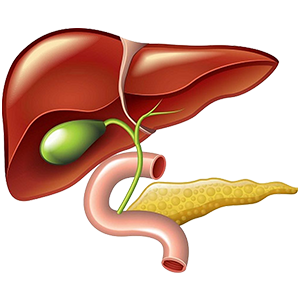Gall Bladder Stones Surgery in Dubai


Gallstones are stone-like objects that most commonly develop in the gallbladder, a small organ tucked up under the liver, on the right side of the body. The gallbladder’s job is to store and dispense bile- a fluid made by the liver that helps digest fats in the fats/food you eat. The gallbladder, even if removed, causes no observable problems in a healthy individual. However, sometimes diarrhoea and fat malabsorption are noticed in people who have their gallbladder removed by surgery. Gallstones’ size can vary from tiny grains of sand to a few centimetres sized stones. The gall bladder stones are made of bile contents like cholesterol or bile pigments. Dr Girish Juneja is renowned for performing the best gall bladder stones surgery in Dubai.
Why are stones formed in the gall bladder?
Below are the general factors that lead to the formation of gallstones:
- Obesity is one of the leading causes of gall stones formations in the gall bladder.
- Gallstones develop more commonly in females who are above 40 years. The risk increases if they are obese.
- Pregnancy, as well as a sedentary lifestyle, also increases the risk.
- High cholesterol diets, refined carbohydrates, and eatable consisting body fats like cheese, butter, and red meat also can cause gallstones.
- Diabetes, cirrhosis, Crohn's disease, metabolic syndrome, and other diseases can cause gallstones.
- Rapid weight loss (like after bariatric surgery) can also cause gall stones.
Why should you get treatment for gall stones & what problems they can cause in the body if left untreated?
There are several complications of a gallstone attack. Therefore, you should get proper treatment of gall stones at the earliest to avoid further complications, including:
- Bloating.
- Nausea and vomiting.
- Abdominal pain.
- Shoulder pain.
- Back pain.
- Chest pain.
- Jaundice
- Pancreatitis
- Cancer of gall bladder
What are the possible symptoms of gall stones?
Biliary colic (intermittent duct blockage)- In this condition, the patient experience a sudden and rapidly increasing pain accompanied by nausea & vomiting. The pain occurs in several body parts, such as the upper right side of the abdomen, between the shoulder blades, and under the right shoulder.
Pain is the most common symptom most people experience with gallstones. This pain can be mild to severe and can last from 15 minutes to several hours. Gallstones can cause acute cholecystitis, a more serious condition when the gallbladder is inflamed. It may require antibiotics, hospitalization and even urgent surgery. Sometimes stones can pass out of the gallbladder and into the common bile duct can cause a complete blockage of the duct with jaundice, infection and pancreatitis, which is a serious emergency.
Dr Girish’s treatment plan for gallstones treatment depends on how the symptoms affect the patient’s daily life.
If you don’t have any symptoms, active monitoring is often recommended. It means you won’t receive immediate treatment, but you should let your doctor know if you notice any symptoms.
How can you be sure that you have gall stones?
Abdominal ultrasound
It is a quick & simple test done by a radiologist. It can be done in 6-8 hours of fasting state and is considered a perfect test for detecting gallstones.
Magnetic resonance cholangiopancreatography (MRCP)
This test uses an MRI scanner to produce high-resolution images of the bile ducts, pancreas, and gallbladder. These images are used for further tests and treatments.
How can gall stones be treated?
Dr Girish offers gall stones treatment by latest techniques & he is one of the most experienced (30 yrs. of experience in surgery & laparoscopy) surgeons in Dubai. So it can be under your existing insurance.
Non-surgical treatments for gallstones
Medications
Some medicines can dissolve stones, especially the ones that are tiny & made of cholesterol. However, medications have high rates of failure & recurrences are also there. In addition, dissolving medications can take a long time, and they have side effects.
Surgical treatments for gallstones (Cholecystectomy)
Dr Girish offers surgery by latest techniques which include:
Surgical pearls
- The gallbladder isn’t an essential organ, and you can lead a normal life without one.
- As a general rule, the longer you go with symptoms, the more likely your condition will get worse & surgery will be difficult.
The various techniques practised for a Gall bladder stones surgery in Dubai are:
- Laparoscopic
- SILC
- NOTES
Laparoscopic Cholecystectomy/Keyhole surgery
Laparoscopic Cholecystectomy remains the safest procedure for removing the gallbladder to treat gallstone disease. The surgeon’s advanced skills and experience are the most important factor to prevent or reduce the chances of complications.
How is it performed?
- This procedure uses 3-4 small cuts to access the abdominal cavity to remove the gallbladder. It involves using a laparoscope (camera) to inspect the abdominal cavity and perform surgery.
- Your abdomen is temporarily inflated using carbon dioxide gas. It is harmless and makes it easier for the surgeon to see your organs by creating space inside.
- A long, thin telescope with a tiny light and video camera at the end) is inserted through one of the cuts in your abdomen, which allows your surgeon to view the operation on a video monitor. They’ll remove your gallbladder, including gall stones, using special surgical instruments.
- If gallstones are found, they may be removed during keyhole surgery. If the operation can’t be done this way, or an unexpected complication occurs, it may have to be converted to open surgery.
- After the gallbladder has been removed, the gas in your abdomen escapes through the laparoscope, and the cuts are closed with dissolvable stitches and covered with dressings.
The operation takes about one hour, and you can usually go home the same day or the next morning. Full recovery typically takes around 07 days.
Traditional (open) Cholecystectomy
Nowadays, it is performed only if the patient is:
- Having severe inflammation of the gallbladder.
- Experiencing difficulties during an attempted laparoscopic surgery.
- Having severe cardiac and respiratory issues.
- Having a late-term pregnancy.
- Experiencing major scarring from previous surgery.
- Having suspected gallbladder cancer, a very rare condition
Single Incision Laparoscopic Cholecystectomy (SILC)
A single-incision laparoscopic cholecystectomy (SILC) is a new technique used by surgeons. However, it is still an experimental technique for which we lack long-term studies and analysis regarding this technique.
SILS involves using one retractor with three holes instead of 3-4 trocars to minimize the trauma and reduce the number of scars. Unfortunately, this technique still hasn’t gained any popularity.
Natural Orifice Transluminal Endoscopy Surgery (NOTES)
The Natural Orifice Transluminal Endoscopy Surgery is a technique in which a surgeon uses a natural orifice, such as the stomach or vagina, to access the abdominal cavity without external incisions or scars. It is still an experimental technique & you will not have any external scar.
Endoscopic Retrograde Cholangio-pancreatography (ERCP)
Endoscopic retrograde cholangio-pancreatography (ERCP) is a procedure that can be used to remove gallstones from the bile duct.
Are obesity and weight loss risks for gallstones?
People who are overweight or planning to lose weight –either through a planned diet program or surgery—have an increased risk of developing gallstones.
Rapid weight loss is also a concern. If you go on a diet plan that significantly reduces your calorie intake or you had a weight loss surgery, your liver secretes extra cholesterol into the bile. In addition, patients undergoing sleeve gastrectomy or gastric bypass or other weight-loss surgical procedures that will lead to rapid weight loss are at risk of gallstone formation.
Why Choose Dr Girish Juneja For Your Gall Bladder Stones Surgery in Dubai?
- He’s a well-experienced surgeon with 30 yrs of surgical experience. He has done hundreds of Gall bladder stones surgeries in UAE on local & international patients, so you can count on him & his surgical team for a safe and the best gall bladder stones surgery in Dubai.
- He is the first surgeon to have received the Excellence Award for bariatric surgery (by the world body – the international federation for the surgery of obesity & metabolic disorders) in Dubai, UAE, 2017
SURGICAL PACKAGES AVAILABLE
Check what all is included and not included in the package.
Package includes:
- Pre-Operative Anaesthesia consultation, blood and other investigations.
- The fee of the surgeon
- Operation charges
- Doctor Consultation charges
- Medication used during and post-procedure
- Routine laboratory testing.
- Post-operation Laboratory investigations.
- Routine Medical consumables
Package excludes:
- Any type of therapy, investigation or procedures apart from the above mentioned will be charged separately.
- After discharge, medication will be charged separately.
Insurance companies usually cover this procedure. Otherwise, the price ranges from 25,000- 35,000 AED depending upon the case.


